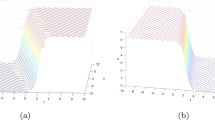Abstract
This paper presents a novel approach for transient and distortion analyses for time-invariant and periodically time-varying mildly nonlinear analog circuits. Our method is based on a frequency domain Volterra series representation of nonlinear circuits. It computes the nonlinear responses using a nonlinear current method that recursively solves a series of linear Volterra circuits to obtain linear and higher-order responses of a nonlinear circuit. Unlike existing approaches, where Volterra circuits are solved mainly in the time domain, the new method solves the linear Volterra circuits directly in the frequency domain via an efficient graph-based technique, which can derive transfer functions for any large linear network efficiently. As a result, both frequency domain characteristics, like harmonic and intermodulation distortion, and time domain waveforms can be computed efficiently. The new algorithm takes advantage of identical Volterra circuits for second- and higher-order responses, which results in significant savings in driving the transfer functions. Experimental results for two circuits—a low-noise amplifier and a switching mixer—are obtained and compared with SPICE3 to validate the effectiveness of this method.
Similar content being viewed by others
Author information
Authors and Affiliations
Corresponding authors
Rights and permissions
About this article
Cite this article
Yang, J., Tan, SD. Nonlinear Transient and Distortion Analysis via Frequency Domain Volterra Series. Circuits Syst Signal Process 25, 295–314 (2006). https://doi.org/10.1007/s00034-004-0819-3
Received:
Issue Date:
DOI: https://doi.org/10.1007/s00034-004-0819-3



